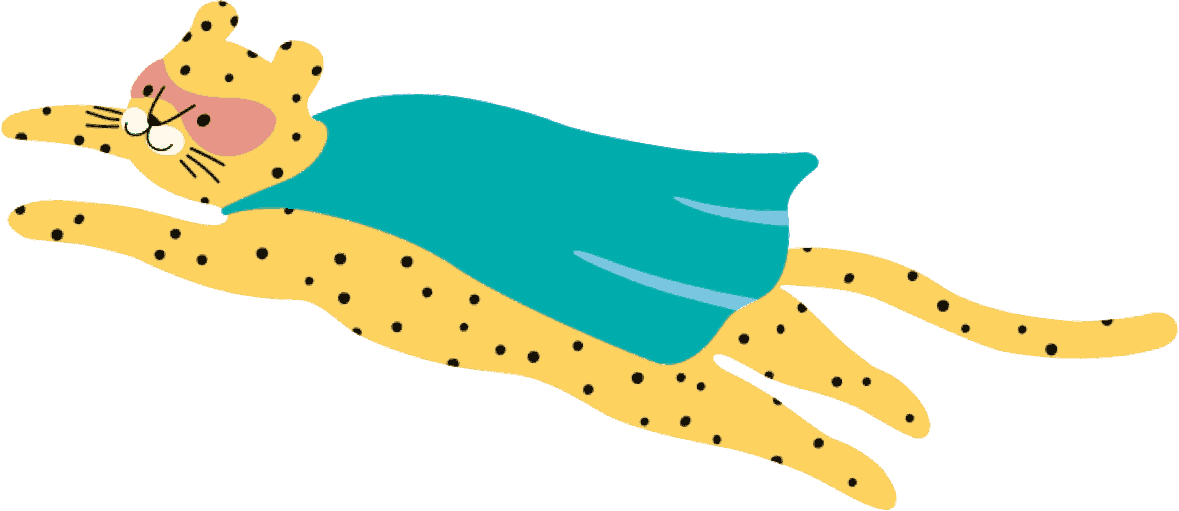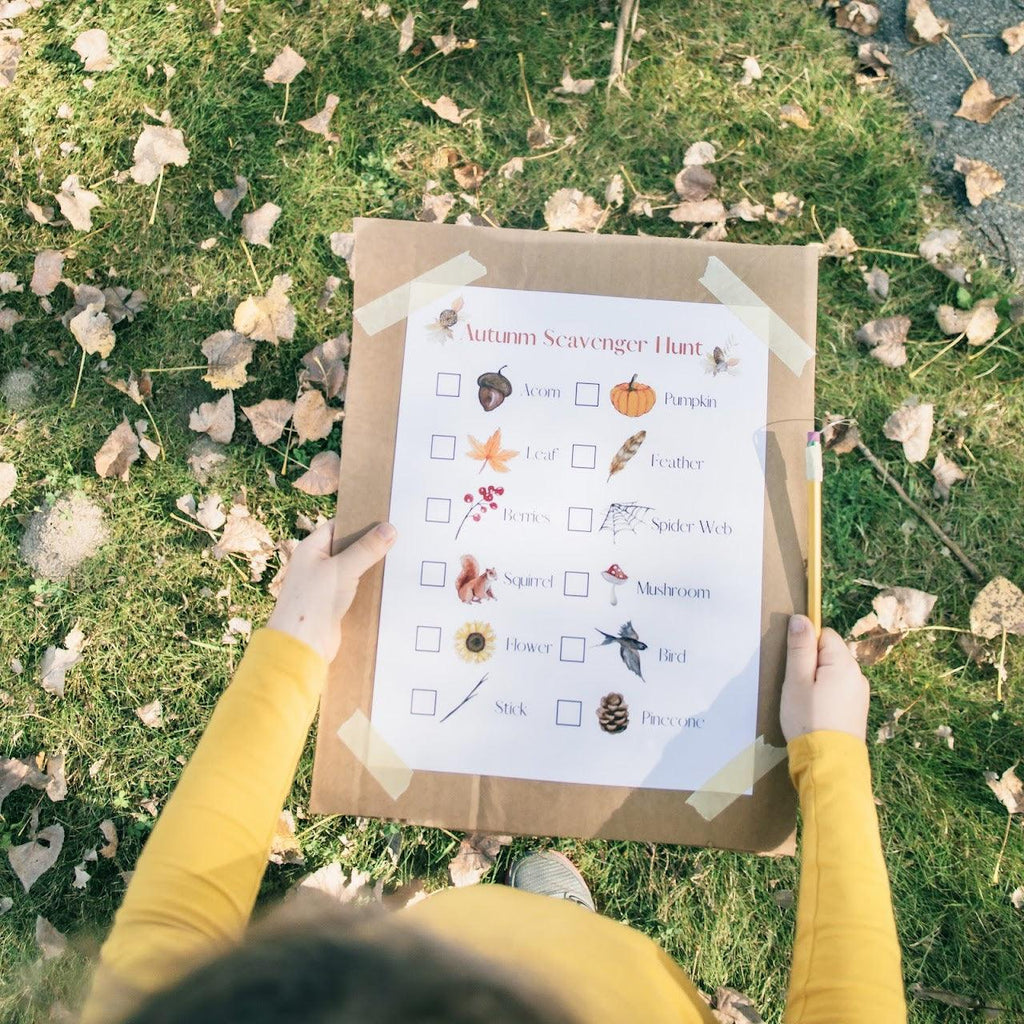Have you ever proposed taking a trip outdoors and been met with protests from your kids saying “I don’t want to go for a walk, walks are boring"? Scavenger hunts are a fun and exciting way to get your little explorers out in nature, indulge their curiosity, and burn off some energy. Plus, scavenger hunts encourage problem solving, observation, and teamwork. Best of all for parents, they require little preparation and are enjoyed almost anytime of year!
Materials:
- Paper
- Marker
- A clipboard or a piece of cardboard and tape (optional, but good for keeping papers from blowing out of little hands)
- Pencil
- String (optional)
- Backpack or basket to carry treasures
Instructions:
- Create a Nature Scavenger List. You’ll want to select 10-12 items to hunt for based on what is found in your area. Some ideas are: acorn, pumpkin, leaf, stick, feather, spider web, corn stalk, flower, animals, etc. Depending on what time of year it is, you can always update lists to be more seasonal and local to your location. Including a photo or drawing along with the word will give kids independence to search and help lay a foundation for reading. Don’t forget to include a box that they can check off when they’ve found the item!
- Tape your list to a piece of cardboard that is bigger than your 8.5x11” sheet of paper so that kids have an edge they can hold onto without having their fingers block the list. A clipboard would also work!
- Tie a string around a pencil and tape it to the cardboard or clipboard so that they can check off items without losing their pencil.
- Give your little ones a rundown of what they’ll be looking for on the walk. Looking for items will help them practice their observation skills and give them a concrete object to pair with the word, which in turn helps improve their communication and language skills. Don’t forget to mention where they should place an item once found (if it can be collected), and how to mark it off the list. This helps them practice following directions.
- Grab a backpack or basket and your scavenger hunt list, and head out the door to your favorite path or walking trail. By collecting items together or sharing extra items that they’ve already found, kids can practice working as a team and being a team player. Problem solving also comes into play as they figure out if the item is on their list, how to get to it once it’s been spotted, and if it fits in their backpack.
- Once everything has been found, head back to the house to explore your treasures and enjoy your favorite fall treat (like apple cider and donuts!) for a job well done.
Skill areas addressed:
- Problem solving
- Teamwork
- Observation
- Communication
- Language
Extensions & Adjustments:
- For kids who are able to read (5-6 years+), use a word list without photos to give them practice reading. You could also involve math by giving them quantities of items to find.
- For kids 3-4 years that are having trouble finding items alone, work together as a team or get prompts from a caretaker.
Author: April Karschner

